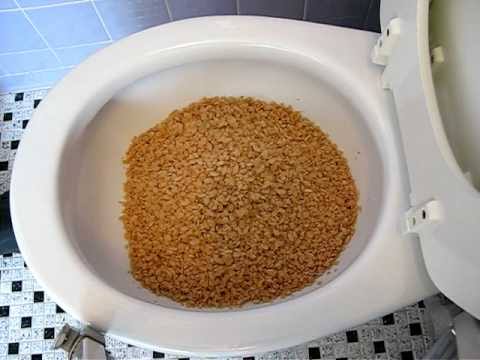Can You to Flush Food Down the Toilet?
Can You to Flush Food Down the Toilet?
Blog Article
What are your thoughts about Is it safe to flush food (especially rice) down the toilet??

Intro
Many people are often faced with the problem of what to do with food waste, especially when it pertains to leftovers or scraps. One typical concern that develops is whether it's all right to purge food down the bathroom. In this article, we'll delve into the reasons people may consider purging food, the effects of doing so, and alternative methods for correct disposal.
Reasons why individuals may think about flushing food
Absence of awareness
Some people may not recognize the prospective harm triggered by purging food down the toilet. They may erroneously believe that it's a harmless method.
Convenience
Purging food down the commode might appear like a fast and simple service to getting rid of unwanted scraps, particularly when there's no nearby trash can readily available.
Laziness
In many cases, individuals may just select to flush food out of sheer idleness, without taking into consideration the consequences of their activities.
Consequences of flushing food down the commode
Ecological effect
Food waste that winds up in rivers can contribute to pollution and injury aquatic communities. Furthermore, the water made use of to flush food can strain water sources.
Pipes issues
Flushing food can result in blocked pipes and drains, triggering pricey plumbing fixings and inconveniences.
Sorts of food that should not be purged
Fibrous foods
Foods with coarse appearances such as celery or corn husks can obtain entangled in pipes and trigger obstructions.
Starchy foods
Starchy foods like pasta and rice can soak up water and swell, resulting in clogs in pipes.
Oils and fats
Greasy foods like bacon or food preparation oils should never be purged down the commode as they can solidify and cause clogs.
Proper disposal techniques for food waste
Making use of a garbage disposal
For homes outfitted with garbage disposals, food scraps can be ground up and purged with the pipes system. Nonetheless, not all foods appropriate for disposal in this fashion.
Recycling
Particular food product packaging materials can be recycled, reducing waste and decreasing ecological effect.
Composting
Composting is an environmentally friendly means to dispose of food waste. Organic materials can be composted and used to improve dirt for horticulture.
The importance of proper waste management
Decreasing environmental injury
Correct waste administration practices, such as composting and recycling, help reduce air pollution and protect natural resources for future generations.
Protecting plumbing systems
By staying clear of the technique of flushing food down the toilet, home owners can protect against expensive plumbing repairs and preserve the honesty of their pipes systems.
Verdict
In conclusion, while it may be tempting to flush food down the toilet for ease, it is essential to comprehend the prospective consequences of this activity. By embracing appropriate waste administration practices and dealing with food waste sensibly, individuals can contribute to healthier pipes systems and a cleaner atmosphere for all.
FLUSH FOOD DOWN THE TOILET?
FLUSHING FOOD CAN CAUSE BLOCKED DRAINS IN YOUR HOME
All of the plumbing fixtures in your home are connected to the same sewer pipe outside of your home. This outdoor sewer pipe is responsible for transporting all the wastewater from your home to the Council sewer mains. Even small pieces of food that go down the kitchen sink can cause problems for your sewer. It should therefore be obvious that flushing larger bits of food, such as meat, risks a clog in either the toilet itself or the sewer pipes. Flushing greasy food is even more problematic because oil coagulates when it cools, coating the interior lining of your pipes.
THE TOILET IS NOT A BIN
Food isn’t the only thing that people shouldn’t be flushing down the toilet. People use the toilet to dispose of all kinds of things such as tampons, makeup wipes, dental floss, kitty litter and even underwear. Water goes to great lengths to educate residents about the high costs and stress placed on wastewater treatment systems simply from people flushing the wrong stuff down the toilet. It costs taxpayers millions of dollars each year, and homeowners thousands in blocked drain repairs.
FLUSHING FOOD IS A WASTE OF WATER
Flushing food is a waste of our most precious resource - water. In June this year Level 1 water restrictions were introduced to protect water supply from drought conditions. Much of New South Wales continues to be affected by prolonged drought with recent figures revealing up to 97 per cent of the state remains in drought. Depending on whether you have a single or dual flush toilet, every single flush uses between five and 11 litres of water. In the current climate this is a huge amount of water to be wasting on flushing food that should be placed in the bin (or better yet, the compost).
https://www.jabplumbingsolutions.com.au/blog/can-you-flush-food-down-the-toilet

Hopefully you enjoyed our part on . Thanks so much for taking the time to read our short article. Enjoyed our blog posting? Please share it. Help someone else discover it. We thank you for your readership.
Call Today Report this page